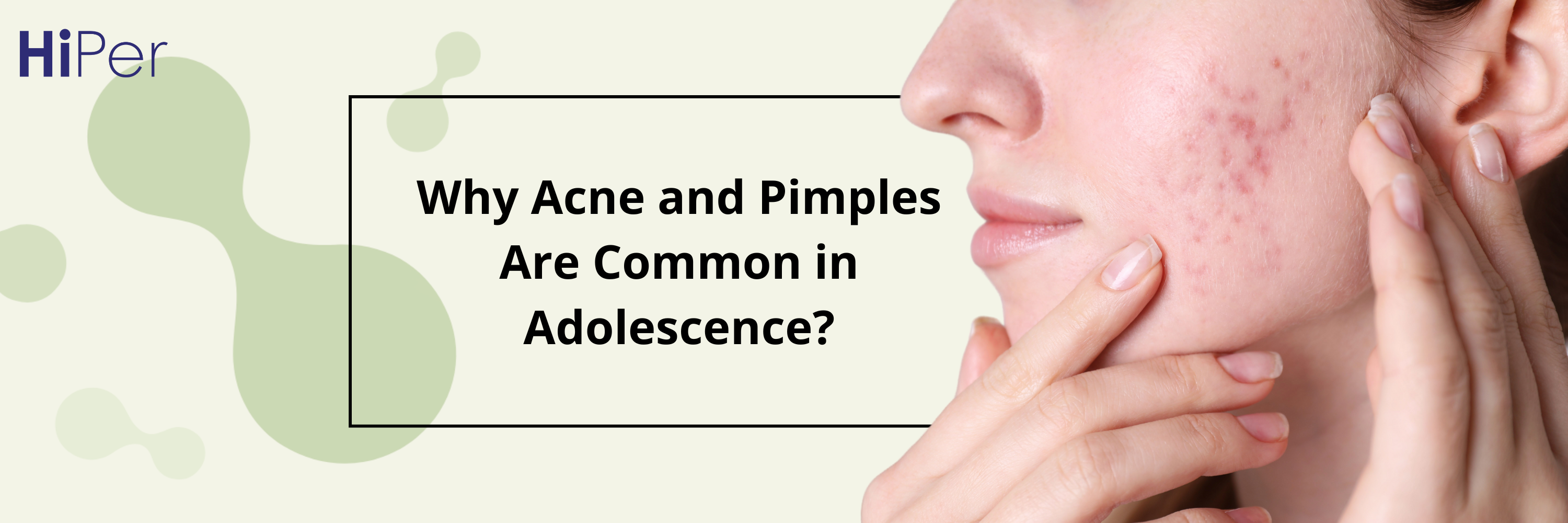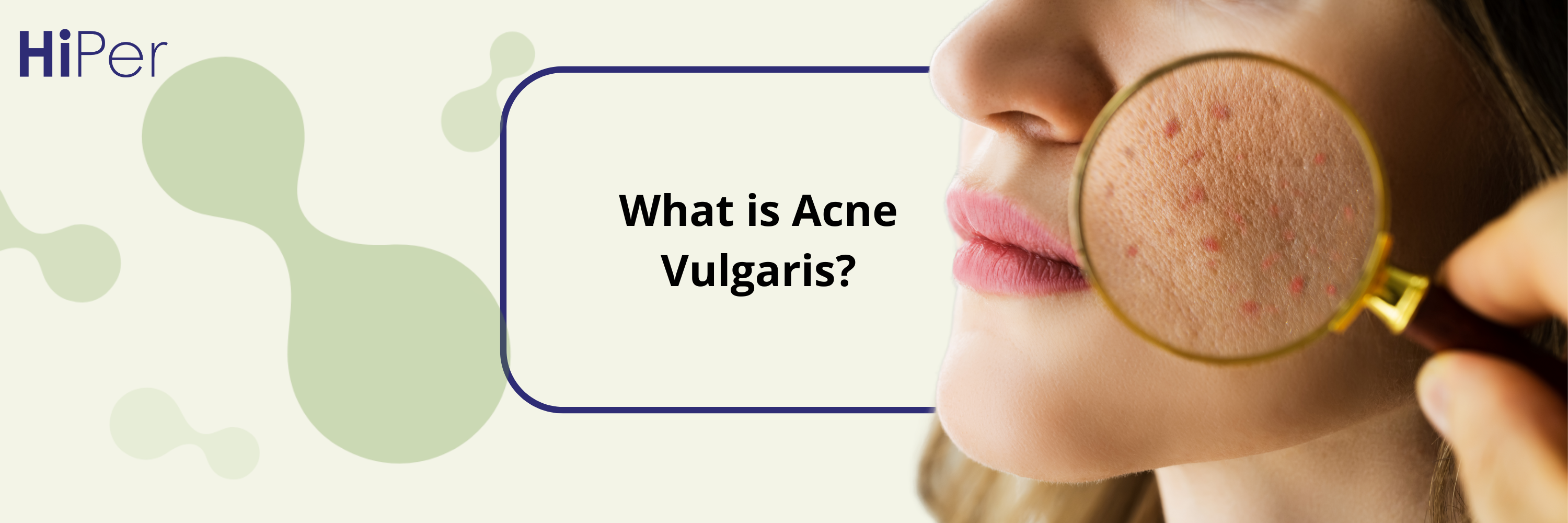
Why Acne and Pimples Are Common in Adolescence?
Acne. The five-letter word no teen wants to hear but almost every teen faces. Whether it’s the occasional pimple before a big day or persistent breakouts that seem to have no end, acne is one of the most common skin concerns during adolescence. But why does this happen just when you’re trying to feel more confident about how you look? Let’s dive into the science behind teenage acne and why it’s such a widespread issue.
What Is Acne?
Acne is a skin condition that occurs when hair follicles under the skin become clogged with oil (sebum) and dead skin cells. This can lead to blackheads, whiteheads, pimples, and in more severe cases, cysts or nodules. It most commonly appears on the face, chest, back, and shoulders.
Why Adolescence?
The short answer: hormones.
The long answer? Let’s unpack it.
1. Hormonal Changes – The Root of the Problem
Puberty is a time of massive hormonal shifts. One key hormone family involved is androgens, which includes testosterone. These hormones are responsible for stimulating oil glands in your skin—especially on the face, chest, and upper back.
When androgens surge (as they do during puberty), sebaceous (oil) glands enlarge and produce more sebum. Excess oil can mix with dead skin cells and block your pores, creating a perfect environment for acne-causing bacteria to thrive.
2. Increased Sebum Production
Sebum isn’t inherently bad—it helps protect your skin. But too much of it can lead to clogged pores, especially when combined with poor exfoliation or buildup of dead skin cells. The excess oil sits in the pores, trapping bacteria like Cutibacterium acnes (formerly Propionibacterium acnes), which causes inflammation and, ultimately, acne.
3. Overactive Skin Cell Turnover
During adolescence, your skin cells turn over faster, meaning new skin is generated more quickly. While this is generally a good thing, it also means more dead skin cells can build up and clog pores—especially if not cleaned effectively.
4. Bacteria + Inflammation = Pimples
When a clogged pore becomes inflamed, the surrounding skin can turn red, swollen, and painful. The presence of acne-causing bacteria increases inflammation and triggers the formation of pus-filled pimples. For teens with more sensitive or reactive skin, this process can happen frequently.
Other Contributing Factors in Adolescents
While hormones play the starring role, other supporting actors can worsen acne in teens:
1. Diet and Lifestyle
Although acne isn’t caused by poor eating habits alone, diets high in sugar, dairy, or refined carbohydrates can increase inflammation and worsen acne. Processed snacks, sodas, and sugary cereals—staples in many teen diets—might be doing your skin no favors.
2. Stress
Teen life is stressful. Between school, social pressures, and extracurriculars, stress levels can soar—and stress is known to increase cortisol levels, which may aggravate acne by encouraging more oil production.
3. Incorrect Skincare or Overcleansing
Many teens try to fight acne by scrubbing their faces or using harsh products, which can backfire. Over-cleansing can strip the skin of its natural moisture barrier, triggering more oil production as compensation. Skincare that isn’t designed for acne-prone or sensitive skin can also clog pores or cause irritation.
4. Genetics
If your parents had acne as teens, there’s a higher chance you’ll experience it too. Genetics play a role in oil production, inflammation response, and skin cell turnover rate.
5. Use of Makeup or Hair Products
Teen years often bring experimentation with beauty products. But heavy or comedogenic (pore-clogging) makeup and hair products can also contribute to breakouts—especially when not properly removed.
How to Manage Acne During Adolescence
Now that we know why acne is so common in teenagers, what can be done about it?
1. Use the Right Skincare Products
Look for skincare that’s non-comedogenic, fragrance-free, and specially designed for acne-prone skin. HiPer’s dermatologist-approved formulas, for example, use active ingredients like:
- Salicylic acid – Helps unclog pores and exfoliate dead skin cells.
- Niacinamide – Calms inflammation and balances oil production.
- Probiotics and prebiotics – Support a healthy skin microbiome.
- Zinc – Soothes skin and reduces bacterial growth.
Avoid alcohol-based toners or harsh scrubs. Instead, go for gentle, balanced routines that support your skin barrier.
2. Be Consistent With Your Routine
Skincare isn’t magic—it needs time. Commit to a routine and give products at least 4–6 weeks to show results. A basic routine should include:
- A gentle cleanser (morning and night)
- A targeted treatment (serum or spot treatment)
- A lightweight moisturizer
- Sunscreen (yes, even for oily skin!)
3. Don’t Pick or Pop Pimples
As tempting as it is, squeezing pimples can push bacteria deeper into the skin and cause scarring. Hands off!
4. Eat Mindfully and Hydrate
Fuel your body with nutrient-dense foods—especially fruits, vegetables, and foods rich in omega-3 fatty acids. Drink plenty of water to keep your skin hydrated and support detoxification.
5. Seek Help If Needed
If over-the-counter solutions aren’t working, consult a dermatologist. For more persistent or cystic acne, prescription treatments may be needed. HiPer also offers personalized routines and AI skin assessments to guide you based on your unique skin type.
In Summary
Acne during adolescence is incredibly common—and completely normal. Hormonal changes, increased oil production, and bacterial buildup all play a role in creating the perfect environment for breakouts. While it may be frustrating, know that you’re not alone, and with the right approach, you can manage acne effectively.
Remember: clear skin doesn’t mean perfect skin. The goal is healthier, happier skin—and that starts with understanding your skin and treating it kindly.
Need help figuring out your skin’s needs?
Take the HiPer Challenge—our 28-day transformation program with AI-powered skin analysis, expert advice, and product recommendations tailored just for you. Clearer, calmer skin is just a few steps away.


